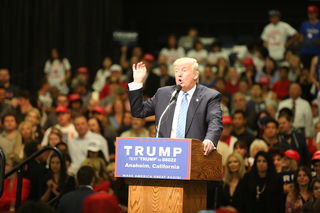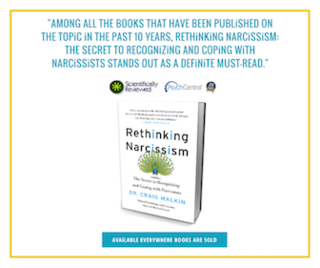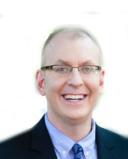Narcissism
Patient in Chief
Controversy over the POTUS's mental health continues to grow.
Posted March 16, 2017

We’re in the midst of a mental health crisis, the likes of which this country has never seen. It’s not the surge in opiate use, the prevalence of depression, or barriers to quality care, all of which are troubling in their own right. This crisis centers on one man.
There’s growing concern among mental health professionals for the emotional stability of our 45th president; some clinicians, in fact, have flouted long-standing ethical codes (the "Goldwater rule" forbids us from diagnosing public figures we’ve never evaluated in person), by declaring that the POTUS has narcissistic personality disorder (NPD).
This isn’t a fringe movement; late last year, at Harvard Medical School, three top mental health experts petitioned President Obama to demand that the POTUS sit for a psychological evaluation. Other clinicians, like psychologist John Gartner, PhD, of John Hopkins Medical School, have insisted publicly that President Trump is seriously disturbed—and to date, he’s rallied over 30,000 signatures from mental health professionals who agree.
It’s important to understand that Gartner and his colleagues are talking about something far darker and more worrisome than the selfie-obsessed “narcissist” we usually read about. Narcissist isn’t even a diagnostic label in mental health; it simply describes people higher in narcissistic traits than the average person.
Narcissism is best understood as a drive to feel special, to stand out from the rest of the 7 billion people on the planet. At its healthiest, it can engender big dreams, charisma, and ambition. Several studies have employed biographical information to conclude that most presidents and politicians score high on narcissism measures. So a hefty dose of narcissism—of feeling extremely special—may fuel effective leadership.
But NPD is different. It’s a defined mental illness in which people grow so addicted to feeling special that they’ll lie, steal, cheat, or do whatever it takes to get their high. My colleagues and I developed a test, the Narcissism Spectrum Scale, which captures nasty behaviors, such as remorseless deception and manipulation, but even our highest scorers probably fall short of NPD.
Diagnosing NPD is complicated, but the core of the disorder comprises what I call triple E—exploitation, callously using others to maintain a special status; entitlement, acting as if the world should bend to one’s will; and finally empathy-impairment, where the drive to feel special blinds people to the pain and suffering of others. More troubling, because they desperately need to feel special, people with NPD can become psychotic.
Just like narcissism and most traits or conditions, psychosis lies on a spectrum. On the low end, people become “thought-disordered,” that is, use tortured logic, deny embarrassing facts, and show horrendous judgment. On the upper end, they may have auditory and visual hallucinations and paranoid delusions. As their special status becomes threatened, people with NPD bend the truth to fit their story of who they are. If reality suggests they’re not special, but flawed, fragile, and—even worse—mediocre, then they simply ignore or distort reality.
Historically, few presidents have appeared to have a looser grip on reality than Richard Nixon—research places him at the top of the narcissism spectrum, almost certainly in the disordered range of NPD. As he fell apart, he became paranoid and erratic, secretly taping every meeting, maintaining an enemies list, and ordering the break-in of the Democratic National Committee headquarters at the Watergate Hotel. By all accounts, his thinking went off the rails. Perhaps this is why, as impeachment loomed over him, he astonishingly painted himself less the conniving criminal than the beleaguered victim, announcing “... the great majority of the people working in the Special Prosecutor’s Office did not support me for president.”
But Nixon’s paranoia and bizarre behavior were predictable. The more narcissistic people become, the less comfortable they are at recognizing when they’re scared or sad or lonely; they dismiss all vulnerable feelings as “bad”—certainly not something special people experience. Their only choice is to imagine a world full of enemies and “evil,” and war against the “bad people” attacking them. Once they’ve triumphed over the aggressors, they’re convinced their problems—their fears and insecurities—will disappear.
Often, people with NPD resort to an insidious strategy called gaslighting—a term drawn from the 1938 play about a man who persuaded his wife she was crazy by, among other means, dimming the gaslights and claiming he’d never touched them. They’re determined to convince people around them that they’re the “crazy” ones who can’t see reality for what it is. When that strategy fails, their sanity slips away; Nixon’s relationship with the press, charged with reporting facts—a threat his self-image—was adversarial at best, but his psychosis reportedly grew more florid as his fall became imminent. He paced the White House halls, holding court with the portraits of past presidents.
If Trump has NPD, the whole country should be alarmed. Because for people with pathological narcissism, feeling special eclipses all other considerations, including dealing with the world as it is rather than what they need it to be. Our solution—and greatest hope—lies in remaining vigilant. Nixon's disordered thinking and behavior soon became too blatant to disguise or hide. If Trump is vulnerable to the same kind of spiral, it will eventually be obvious to all.
In this video, Dr. Leslie Carr and I discuss narcissism, malignant narcissism, the dangers of diagnosing someone in absentia, and at 45:55, what research says about how anti- and pro-trump factions can come together. Be sure to watch to the end!

Where do you fall in the narcissism spectrum? Take the narcissism test and find out. Sign up for my newsletter, for more tips and advice, as well as information on my book, Rethinking Narcissism.
This post is based on an article originally published at Huffington Post




